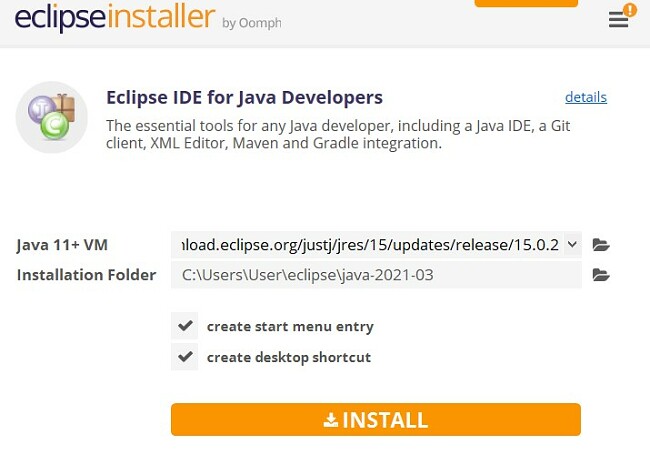

- #ECLIPSE FOR JAVA DEVELOPERS SOURCE CODE INSTALL#
- #ECLIPSE FOR JAVA DEVELOPERS SOURCE CODE UPGRADE#
- #ECLIPSE FOR JAVA DEVELOPERS SOURCE CODE CODE#
- #ECLIPSE FOR JAVA DEVELOPERS SOURCE CODE PLUS#
Now you should see your project in the Package Explorer tab in Eclipse: This dialog lets you change settings for your project, but for now just give your project a name and click the Finish button. This opens up the New Java Project dialog.
#ECLIPSE FOR JAVA DEVELOPERS SOURCE CODE CODE#
ProjectsĮclipse organizes code into projects, so before we can start writing code we have to create a project. We’ll focus on the ones you care about, and you can ignore the rest for now. You should see something like this:Įclipse has a bunch of different tools and buttons, but don’t feel overwhelmed. Freel free to close that tab, and uncheck the “Always show Welcome at start up” checkbox. That will finally open up Eclipse, which by default will show you a Welcome screen. But as you write more code, you might want to split it up into multiple workspaces: you might have the stuff you work on for your job or for school in one workspace, and the stuff you work on for fun in another workspace. Starting out, you’ll probably only use one workspace, so you can also check the “Use this as the default and do not ask again” checkbox as well. You can choose whatever directory you want here (again, the default is fine). The directory you choose here will be where your code and settings files are saved. The first thing Eclipse will do is ask you for a workspace directory:Įclipse needs a place to put your code and your settings, and that’s what a workspace is. After the installer finishes, launch Eclipse! Workspaces
#ECLIPSE FOR JAVA DEVELOPERS SOURCE CODE INSTALL#
Install Eclipse wherever you want (the default location it suggests is fine).
#ECLIPSE FOR JAVA DEVELOPERS SOURCE CODE UPGRADE#
But you can always upgrade from Java to Java EE later, so for now I would just choose the Java version. Otherwise you should just install the Java version. So if you’re going to write server code, then you should install the Java EE version.
#ECLIPSE FOR JAVA DEVELOPERS SOURCE CODE PLUS#

If you’re coming from a Processing background, remember that you wrote Processing code in the Processing editor. But as you start working on more complicated code, you’re probably going to want to use an integrated development environment, aka an IDE.Īn IDE is a more advanced code editor that also includes tools for navigating your code more easily, as well as compiling and running your code without going through the command line. It’s a good idea to start programming this way, so you understand the basics of compiling, running, setting the classpath, and looking stuff up in the Java API. So far, we’ve been using a basic text editor to edit our code, and we’ve been using the command line to compile and run our classes.


 0 kommentar(er)
0 kommentar(er)
